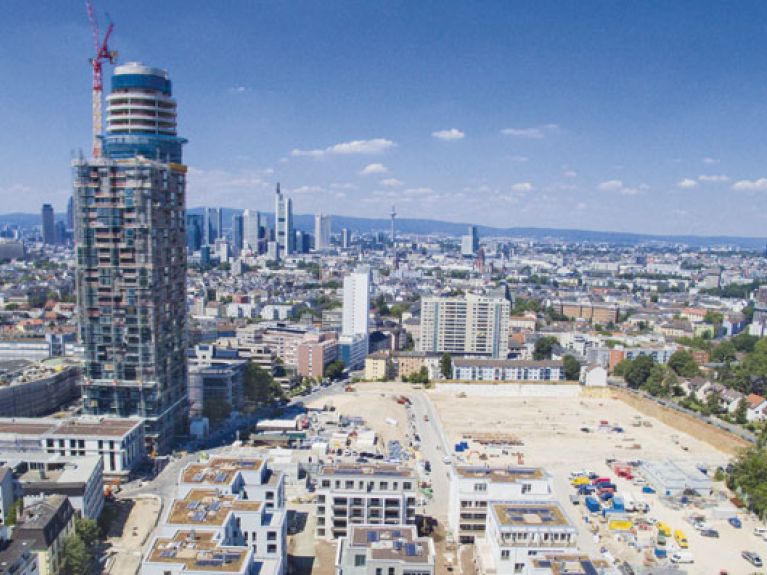Building boom in German cities
Low interest rates and a lack of other attractive investment opportunities are encouraging professional investors and ordinary people to put their money into real estate.

Things are moving in Germany’s cities: construction firms seem to have set up containers, cranes and building fences in every district and every street in Frankfurt am Main, Stuttgart and Hamburg. Houses, apartment blocks and residential towers are being built everywhere. Low interest rates and a lack of other attractive investment opportunities are encouraging both professional investors and ordinary people to put their money into real estate. In Germany people call this “concrete gold” – in the hope that a building will maintain its value during times of crisis and, at best, even enjoy a significant increase in worth.
In the first half of 2016, 30% more building permits were issued in Germany than during the same period of 2015, which was already very good. A total of 182,800 new units of housing can now be built. The last time so many applications were made was in the first six months of 2000.
Other data underscores the impression conveyed by all the cranes on the skyline. For some years now, for example, banks have been granting their customers far more construction loans than in the past. According to figures published by the German Bundesbank, in the period from April to June 2016 the number has increased by over 3% compared to the previous year. Credit is cheaper than ever before. Anyone who wants to build a house pays an average of only 1% interest a year for a five-year mortgage; the annual interest for a ten-year mortgage is roughly 1.2%. Not very long ago, interest rates of over 5% were normal. Accordingly, cautious voices are steadily becoming louder: if people are now building homes with credit that they couldn’t afford during normal times, then things could go seriously awry when interest rates rise again.

